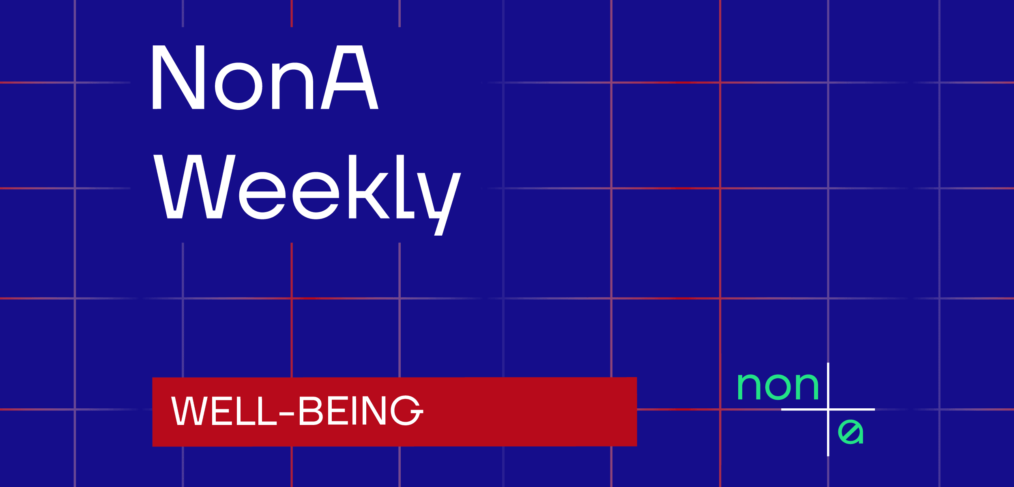
NonA Weekly: THE BICYCLE REVOLUTION 🔥

Image by @wearehere
Hey there, design enthusiasts! 🤩
🚗💨 Ever thought about ditching that gas-guzzler for something sleek, green, and two-wheeled? 🚴♀️ The humble bicycle—a design marvel 🛠 that’s been around since the 19th century ⏳ but is now the avant-garde 🎨 of 21st-century urban planning 🏙.
🖼 Picture this: A city where bike lanes 🚴♂️ are as ubiquitous as skyscrapers 🏢, where the clinking of gears ⚙ replaces the honking of horns 📯. Imagine streets 🛣 that prioritize people 👫 over cars 🚗, creating a harmonious blend of architecture 🏛 and mobility 🛴. This isn’t just a pipe dream 💭; it’s a pedal-powered reality 🚲 in cities like Copenhagen 🇩🇰 and Amsterdam 🇳🇱.
Why the buzz? 🐝 Bicycles 🚲 are the epitome of sustainable transit 🌱, slashing carbon footprints 👣 while boosting public health 💪. But there’s more—bikes are the linchpin 📍 in the evolving narrative of urban spaces 🏙. They challenge the car-centric 🚗 models that have long dominated our cities 🌆, offering a blueprint for a more equitable, accessible, and livable urban fabric 🌈.
So, next time you’re stuck in traffic 🚦 or waiting for a delayed subway 🚇, remember: The future is two-wheeled 🚴♀️, and it’s rolling into a city near you 🌍. 🌆
1. 10 CITIES EMBRACING BICYCLES IN THEIR URBAN PLANNING
What does the future of CITIES and transportation look like? It looks like the future will run on two wheels and a handle bar. Many explain the rise of cyclists as a shift towards a healthier and more economical lifestyle. But while that may be true, why would individuals feel inclined to ride bicycles if the roads don’t support it, or if there weren’t adequate spaces to park?
2. HOW DO BICYCLES INFLUENCE THE ARCHITECTURE OF CITIES?
Bicycles and cycling have seen a major push in community development in cities around the world in recent years, with governments pledging millions in order to make cities more cycle-friendly in an effort to improve the physical and mental health of its inhabitants. But other than making the air cleaner and its people healthier, how does CYCLING influence the architecture and design of a city?
3. DANISH ARCHITECT JAN GEHL ON GOOD CITIES FOR BICYCLING
Bicyclists represent a different and somewhat rapid form of foot traffic, but in terms of sensory experiences, life, and movement, they are part of the rest of city life. Naturally, bicyclists are welcome in support of the goal of promoting lively, safe, sustainable, and healthy cities. The following is about planning good CITIES for bicyclists and is handled relatively narrowly and in direct relation to a discussion on the human dimension in city planning.
4. SCOOTERS, BIKES, AND CARS: THE BATTLE FOR SPACE IN MODERN CITIES
Electric scooters fall into a category of transport that can be called micro-mobility. Bicycles, segways, non-electric scooters, skateboards, longboards, wheelchairs, and Starship delivery robots could vastly be assigned to the same category. It is clear that other sub-categories could be applied to divide these different vehicles – such as power (electric or manual), usage by average age, distance, etc. For the last decades, most CITIES on the globe had four main modes of transport. These included car and public transport on one side and bicycles and walking on the other.
5. HOW DO BICYCLES INFLUENCE THE ARCHITECTURE OF CITIES?
Bicycles have numerous benefits both for people and the city. First of all bicycles are eco-friendly, they reduce air, soil, water and even noise pollution, secondly they can positively influence the architecture of the CITIES. We will tell you all about the benefits and the future of bike-friendly cities in this guide.
6. HOW A FEW SIMPLE DESIGNS CAN RADICALLY REDUCE TRAVEL EMISSIONS
In Holland, the recent creations of safer BICYCLE lanes and bike-specific garages around transit hubs has proven to be an extremely efficient path towards lowering carbon emissions on a large scale.
7. HOW BIKE-FRIENDLY ARCHITECTURE CAN TRANSFORM CITIES FOR THE BETTER
A revolution is occurring in street design. Now hundreds of CITIES are rejiggering to be bicycle-friendly. If you consider that we are talking about a mode of transport that whips our hearts into shape, funnels many more people down streets than can be funneled in cars, has no pollution, and costs governments and individuals an absolute pittance, you won’t ask where it stops, but how close to 100% the bike modal share can possibly go and what we must do to achieve that.
Stay creative and see you all next week 👋
Daniela


